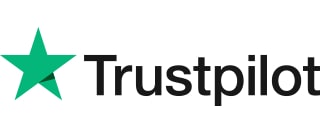New Yorkers aren’t getting the most bang for their buck on public schooling.
The state spends $25,139 per student – more than any other state – to get a public education K-12, says a survey from WiseVoter.com. Other states do better with less.
The state that ranks best for education is Florida, says WiseVoter.com. They ranked public schools based on the amount of students enrolled, teacher-to-student ratio and pass or fail rates of standardized testing compared to a national level. New York didn’t even make the top five – it came in at #9.
Some may think to themselves, “well I’ll just send my child to private school, then.” If you’re a New Yorker, that can run you $20,686 for the average tuition costs. The annual cost of tuition to some private schools in New York can run upward of $60,000, according to the Bloomberg.
Which State Spends the Most on Public Education?
We compared the Best States for Education rankings and K-12 public spending figures to find out which state spends the most on public education. For most states, the rank correlates with the spending – except at the very top of the list.
Idaho (No. 50)
K-12 Spending Per Public Student: $9,053
U.S. News K-12 Rank: 15
Idahoan grade schoolers enjoy a decent education for the lowest per-student spending in the country.
Utah (No. 49)
K-12 Spending Per Public Student: $9,095
U.S. News K-12 Rank: 9
Despite having the second lowest spending per student, Utah provides an above-average public school education. That’s not surprising, given Utah is the only state to get an A+ ranking in financial literacy.
Arizona (No. 48)
K-12 Spending Per Public Student: $9,611
U.S. News K-12 Rank: 48
Arizona ranks exactly where you would expect based on its spending. Of course, teachers don’t come cheap: Elementary teachers have an average starting salary of $49,000, close to the average student loan.
Mississippi (No. 47)
K-12 Spending Per Public Student: $10,170
U.S. News K-12 Rank: 44The Magnolia State’s K-12 education rank dramatically lower than what the state spends.
Florida (No. 46)
K-12 Spending Per Public Student: $10,401
U.S. News K-12 Rank: 14
Despite being ranked #1 in overall education and higher education, Florida’s K-12 public education is above-average considering they are in the bottom five states for per-student spending.
Massachusetts (No. 5)
K-12 Spending Per Public Student: $20,376
U.S. News K-12 Rank: 2
Massachusetts’ public school students also see education quality proportionate to state spending.
New Jersey (No. 4)
K-12 Spending Per Public Student: $22,160
U.S. News K-12 Rank: 1
New Jersey ranks the highest for K-12 education than its spending would suggest.
Connecticut (No. 3)
K-12 Spending Per Public Student: $22,769
U.S. News K-12 Rank: 3
Connecticut’s ranking is in-line with K-12 education as its spending suggests. Hopefully, the lesson plan includes teaching kids about money.
Vermont (No. 2)
K-12 Spending Per Public Student: $23,586
U.S. News K-12 Rank: 4
Vermont’s public school students see education quality that is slightly lower than its state spending. Interestingly, Vermont also has the second-highest published in-state tuition and fees for public universities.
New York (No. 1)
K-12 Spending Per Public Student: $26,571
U.S. News K-12 Rank: 9
The Empire State forks out more money per student than any other in the U.S., but that’s not necessarily paying for the best.
Crushed by student loan debt and worried you’ll never pay it off? There is help available.
At that rate it’s cheaper to send your kids away to a private college than some of the private K-12 schools in New York. The national average cost of that is about $39,700, according to U.S. News.
Public school costs have been increasing
The U.S. spends more than $700 billion dollars on education. Governmental spending has quadrupled over 27 years from $17.1 billion in 1989 to $68.3 billion in 2016, according to the U.S. Department of Education. But, where does all the money go?
On average it costs $17,013 in governmental funding for each student in public school during 2019-2020, according to the most recent data, says National Center for Education.
Those funds go towards teachers and teaching aides’ salaries, employee benefits, school supplies – which can range from books to even heating oil in some colder states – and “purchased services,” or: “services that are provided by personnel who are not on the school district payroll,” according to the National Center for Education Statistics.
The amount spent on teaching staff salaries and benefits has jumped around over the years. In 2013-2014, 80 percent of funding was allocated towards them. Whereas, in 2010-2011, 60 percent went towards paying teachers and teaching aides.
American teachers are well-paid when compared to other countries, according to Vox. But when comparing teachers’ salaries to the average U.S. workers with a bachelors degree, their salaries don’t come close.
Does higher teacher pay equal higher education costs?
There’s a relationship, but even that isn’t entirely consistent.
While it costs on average $26,571 per student in New York, teachers are paid the highest salaries in the U.S. — $90,222 on average. Compare to Vermont, which spends $23,586 per student and their teachers earn $62,483.
Vermont also ranks 15 out of 50 on U.S. News and World Report’s list of “best states for education.” So again, another state may be spending more than necessary – unless they need a lot of heating oil.
“While no one enters the teaching industry for the money, our study findings reveal some rather large income discrepancies depending on where in the country teachers live,” says Kristen Bonner, lead researcher on the study. “For those in the education industry who might be considering a relocation, a state’s job opportunity and competition ratings are also important factors to keep in mind.”
So teachers don’t go into their profession to make a lot of money. You got to give credit to Florida though, they ranked number one in best education and they spend only $10,401 on education per student.
Their teachers may be doing some of the best work in the country, but they didn’t even make the top 10 highest paying list – then again, they didn’t make the worst either.









